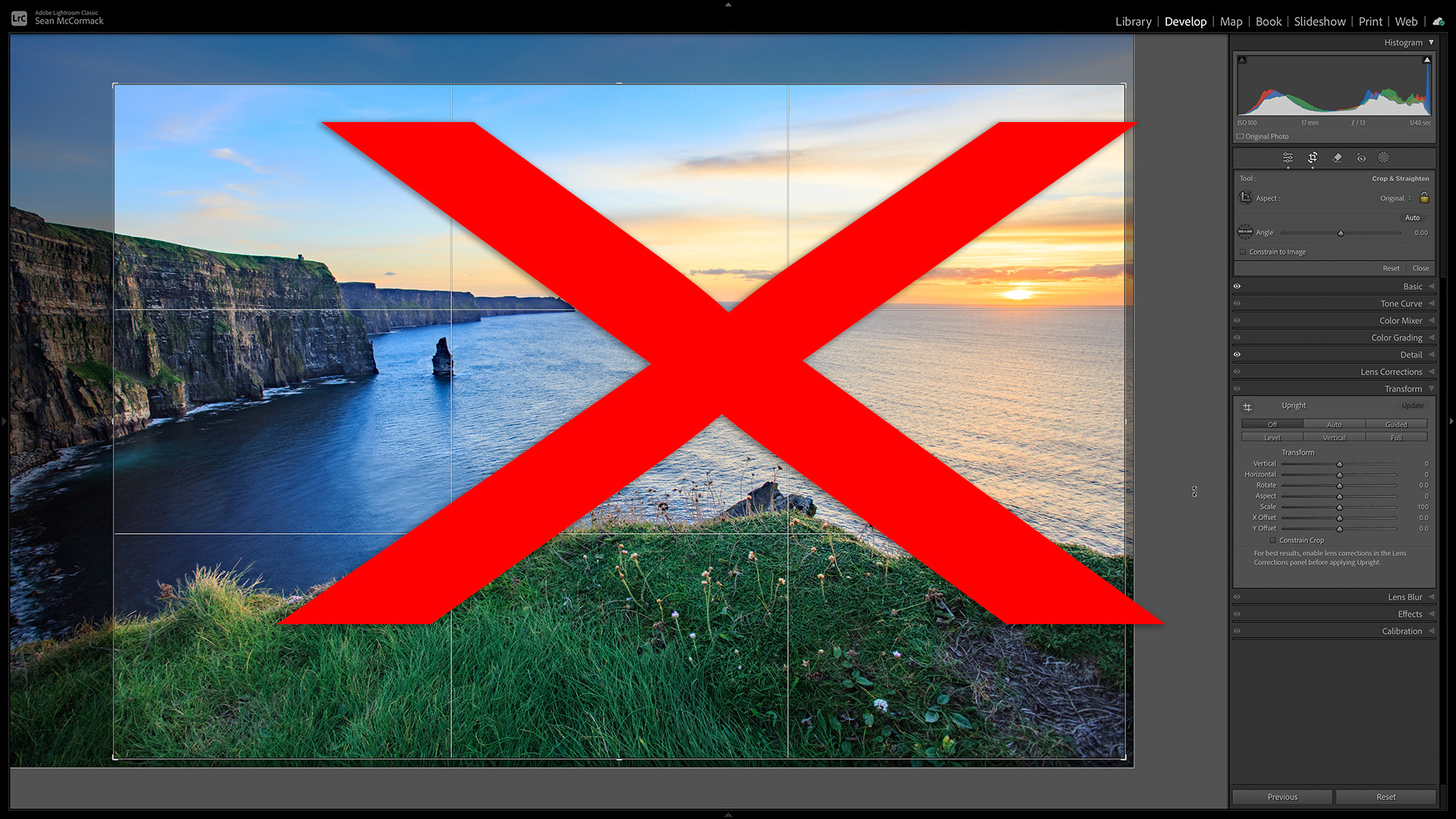
You shouldn’t crop in software.
Always choose the focal length to get the right shot at the time of capture.
Only use prime lenses, a zoom lens dilutes your image quality.
Nail your exposure. If you underexpose or overexpose you’ve missed the shot.
Set your sharpening correctly for a pinsharp image.
Make sure your shutter speed is enough to prevent camera movement.
Always use a tripod.
Real photographers shoot black and white only as it’s the most direct link to historical photography.
And those primes? They should be vintage lenses.
You should never stage a photo, you should always capture the scene as you find it.
Honestly folks, can you imagine how boring and suppressed photography would be if you had to stick to rules like that? We’re blessed in a world where 40+ Megapixel cameras allow us to crop in to get photos within our capture, allowing you to tailor the crop to both the subject and the destination. Be that for print (and you should print), Instagram stories, posts, or going into videos like reels, shorts, or longer form.
Use the lens that gets the shot. Many a shot has been lost swapping to the right prime. Put the zoom lens on. Sure, using one fixed length is great practice – I recently shot a festival with the fixed 23mm (35mm full frame equivalent) on a Fujifilm X100VI, but being able to choose a length leads to a far greater variety of images from a location. Get the best one you can afford. Modern zooms are easily as good are older primes for sharpness.
If you shoot Raw, you have an amazing amount of leeway in exposure. You can easily bring back around two stops of lost highlights, or open up dark shadows with underexposure. These are just tools to enhance your photo. You may have been shooting against overcast skies and nailed your subject’s exposure at the sake of the sky. So you bring it back in raw processing. Good for you. That’s a choice based on experience.
You don’t need a tripod all the time. Sure, if you’re looking at back-to-front depth of field, which can require long exposures, but handheld photos can work well in other situations. You could even use a tripod with motion. There’s a whole brigade of amazing Intentional Camera Movement photographers using motion during exposure to create unique pieces of art.
Black and white photography is beautiful. That classic, pristine, look of form and tone. Often breathtaking. But that doesn’t take from the jaw-dropping shot of an amazing sunset. Or the creative use of color. Understanding how colors interact allows you to take photos that have an immediate and lasting impact, often more than with black and white.
Sharpness is overrated. As Ansel Adams said "There’s nothing worse than a sharp image of a fuzzy concept". Film photography was often not perfectly sharp and the grain of the film prevented really sharp edges. Digital sharpness can be a bane for portraits where the depth of pore detail means a lot of retouching to create a more flattering image. Can you ignore it altogether? No, of course not. Shallow focus photos need the subject to be sharp enough for the subject to be obvious. Better to capture a great photo and fix sharpness later than miss it.
Ignore the purists and use your creativity and gear to the fullest to create photos that represent you, your views, values and likes.
More opinion pieces by Sean McCormack:
- This is why I hate being a photographer
- I switched camera systems, and this is the lens that really surprised me
- I can't believe I actually bought this camera
- These two lenses could do 90% of your photographic work
- You don't always have to shoot Raw as a photographer, but you probably should
- No, you don't need to get on a plane to take great travel photos







